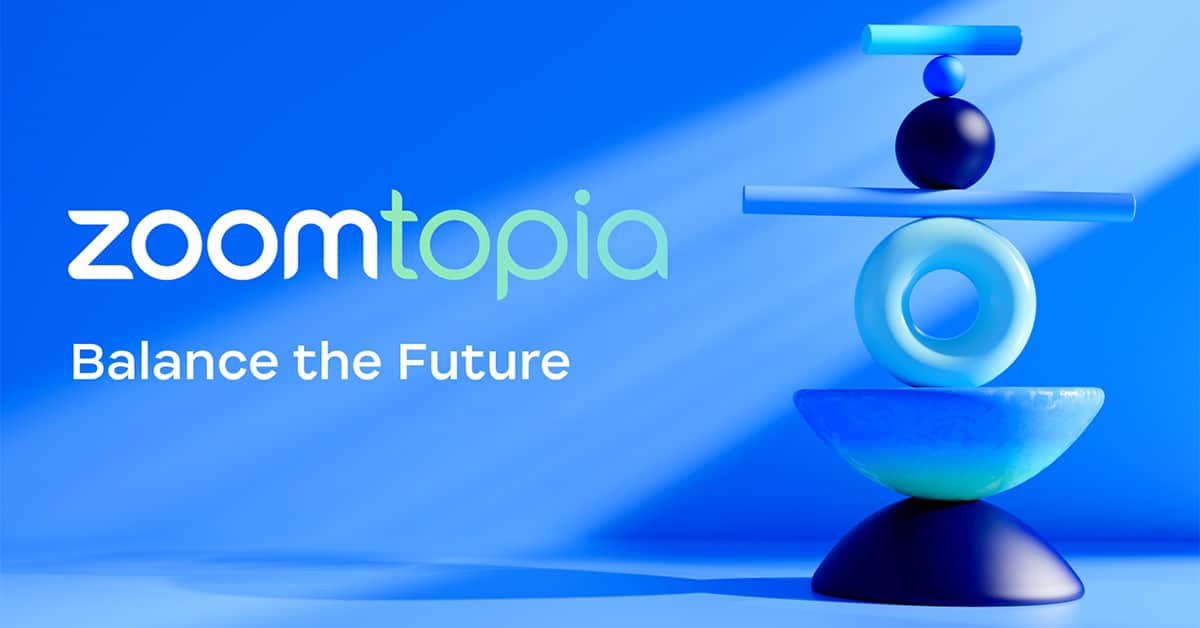Zoom Ventures Far Beyond Video Calls
Senior Analyst

Insights from Zoomtopia 23
Most institutions use Zoom for video in some fashion, whether via a full enterprise license, decentralized individual licenses, or the free version. Zoom has become synonymous with hybrid classes and work, but if you aren’t thinking about how Zoom can meet institutional needs beyond virtual meetings, you should be. Zoom has rapidly expanded its product offerings to build a comprehensive communications and productivity platform. While it can seem like Zoom is racing to build out every feature imaginable, my time at Zoomtopia demonstrated that Zoom is strategically leveraging generative AI functionality to expand its Zoom One platform in ways that present a compelling value proposition to higher education institutions.
Zoom One AI Features to Enhance Collaboration
This year at Zoomtopia, Zoom announced several new features that build upon its impressive portfolio.
While many institutions are aware of Zoom’s Learning Tools Interoperability (LTI Pro) integrations that embed the Zoom video platform within an institution’s learning management system, Zoom announced that it is infusing AI functionality into the LTI Pro feature set. The update will include AI tools to transcribe and summarize class content for students who may have missed class or need to revisit concepts to deepen their understanding.
Zoom has also expanded AI Companion (formerly Zoom IQ)—Zoom’s generative AI assistant that it has embedded in nearly every aspect of the Zoom platform. AI Companion currently enhances Zoom’s Meetings, Mail, Team Chat, and Whiteboard features. For example, AI Companion generates ideas, refines existing content, and adds objects to a Whiteboard canvas to support teams in their research and ideation processes. AI Companion is available to higher education institutions with paid enterprise licenses at no additional cost.
This month Zoom announced Zoom Docs, a new AI-powered workspace that will integrate with Zoom Meetings and AI Companion to help teams collaborate in creating documents, building wikis, and managing workflows. Zoom AI Companion can prepopulate docs with meeting highlights and refine the content or generate complementary content. Zoom envisions that Zoom Docs will support project and data management with AI-suggested artifacts, documentation, and workflow tasks.
Zoom One AI Features for Student Engagement
As a Tambellini Senior Analyst, I help institutions prepare for the future by rethinking how technology can support their business processes. Regardless of the institution’s size, segment, and budget, every institution is working to expand the ways they comprehensively support students throughout their academic lifecycles. Zoom One for Education’s new functionality supports continuous engagement so faculty and staff can be readily available to students in their times of need. AI-assisted interactions can improve the institution’s ability to support students at critical moments before issues hinder their success.
Zoom Contact Center provides robust integration capabilities to allow students to interact with their institution through the institution’s website, service management platform, or platforms the students frequent, including WhatsApp and Facebook Messenger. Zoom Contact Center leverages Zoom Virtual Agent (an AI chatbot) to answer questions or route them to staff members. AI functionality continuously summarizes the session information to provide essential details to everyone interacting with the inquiry. Further, Zoom Contact Center can also be integrated with an institution’s core systems of record, including their CRM or student systems, to provide session participants with just-in-time information relevant to the student’s needs.
As institutions modernize their campus technology ecosystems to minimize technical debt, many seek to move from on-premises phone systems to fully cloud-hosted PBX solutions. The Zoom Phone cloud system is built on the Zoom One platform to enable users to receive phone calls and transition them to Zoom video calls without requiring participants to hang up. Zoom Phone also integrates Zoom Contact Center features, like sharing content or sending chat messages. Institutions can configure Zoom Virtual Agent to listen to incoming phone calls and surface relevant knowledge base articles or web resources in real-time to better assist callers.
Zoom One can also identify insights during a phone or video call to help teams analyze and refine their customer service strategies. Higher education departments that engage in service-oriented interactions, e.g., the helpdesk, admissions office, and financial aid office, may want to explore how Zoom Contact Center and Zoom Phone can help them provide more efficient and effective support to their constituents.
Conclusion
Zoom’s reworked Zoom One for Education platform offers functionality to serve institutions beyond how they have used the platform historically. We are also following how Zoom incorporates human capital management features into Zoom One after acquiring the Workvivo employee experience platform. As Zoom continues to expand Zoom One to address modern communication, collaboration, and productivity goals, we expect to see more institutions worldwide adopting the platform.
Categories
- Academic Administration
- Advancement
- AI and ML
- Content Management
- CRM Platforms
- Customer Experience (CX)
- Cybersecurity
- Data Management and Analytics
- Enterprise Portals and Mobile Apps
- Event Management
- Finance
- HCM/HR
- IT Tools and Infrastructure
- Life at Tambellini
- Services
- Student
- Teaching and Learning
- Technology Leadership
- Thought Leadership
- Uncategorized
Share Article:

Other Posts From this Author:
© Copyright 2025, The Tambellini Group. All Rights Reserved.